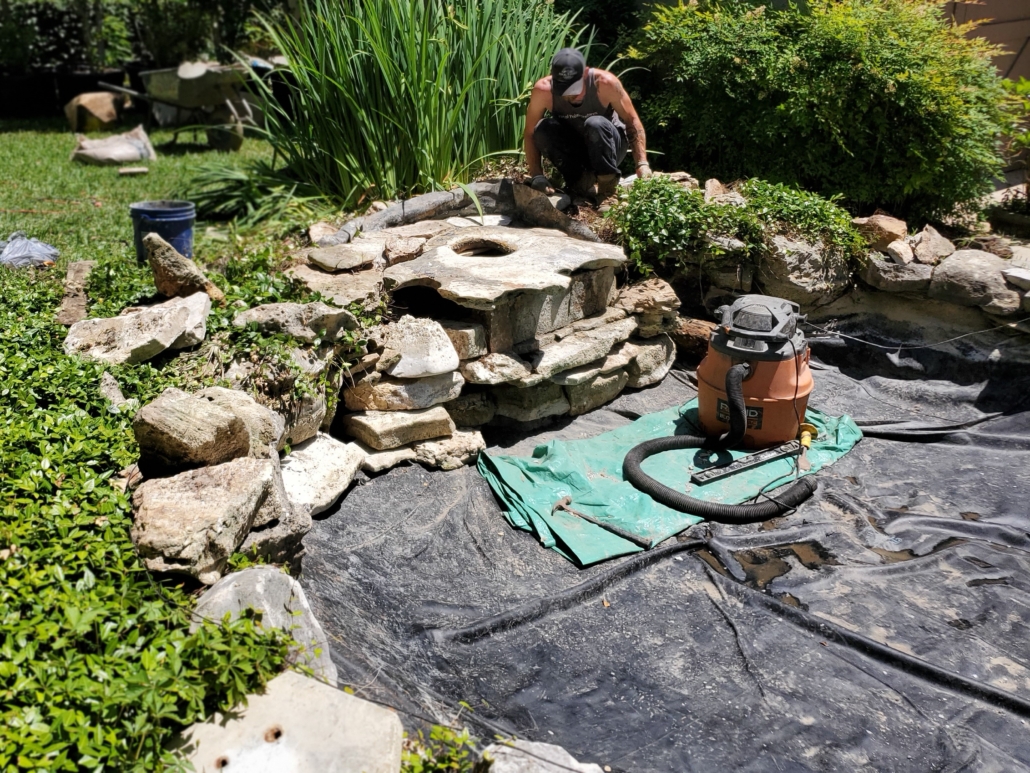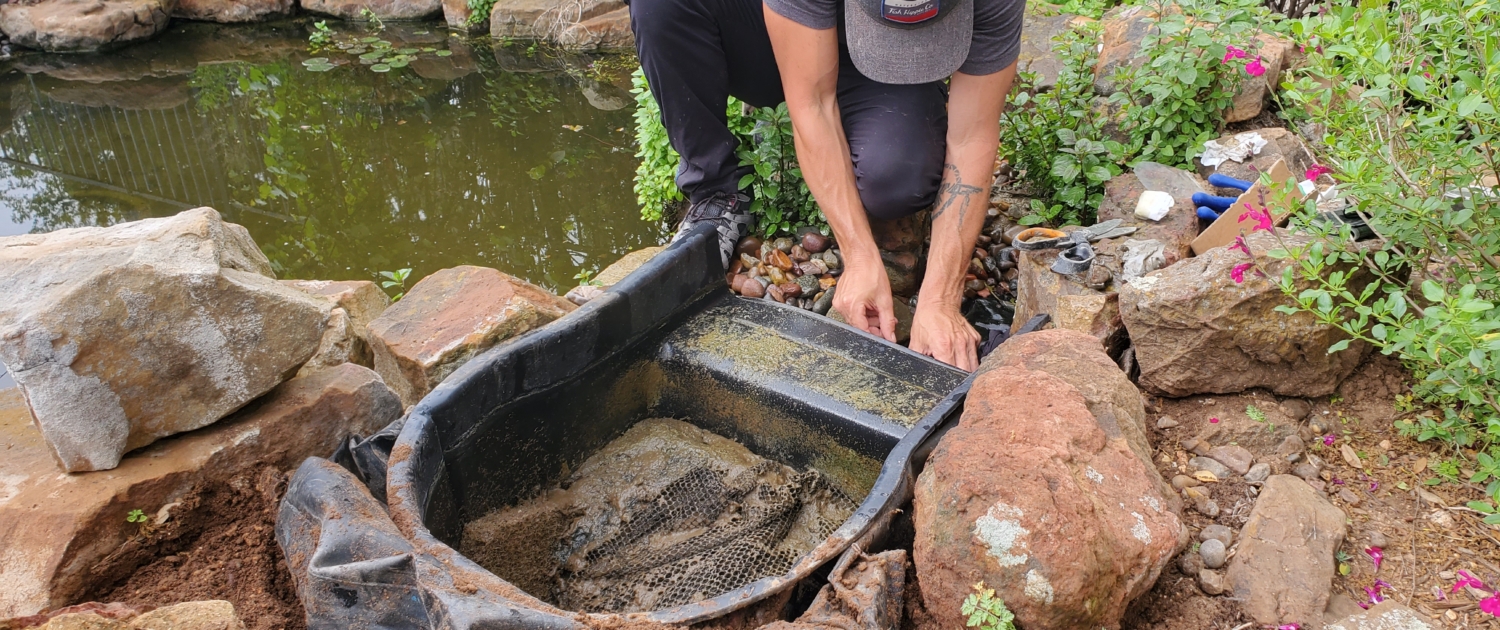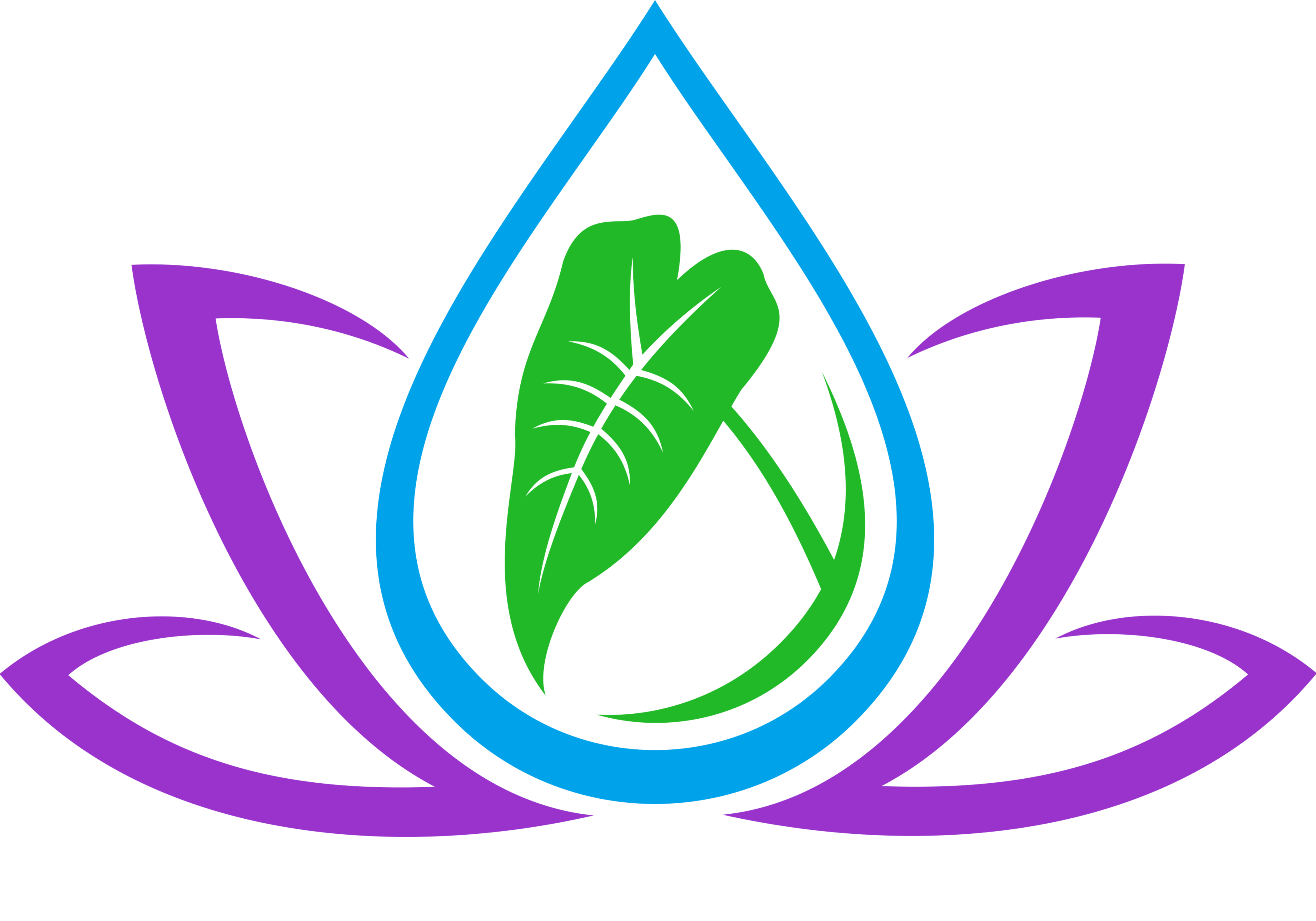Pond Repairs and Replacements
Leaks, pumps, skimmers, filters and more
We specialize in pond repair and replacement in Austin, Texas.
Don’t wait to fix your pond, waterfall, or water feature problems — small issues can quickly turn into big headaches. A failing pump can endanger your fish, stagnant water can attract mosquitoes, and unchecked algae can take over your pond. Even a beloved garden pond can start to look like an eyesore after years of wear and tear.
At Focal Point Features, we specialize in pond repair, koi pond maintenance, waterfall restoration, and water feature troubleshooting. Whether it’s a simple leak, pump replacement, or a full-scale water feature overhaul, we provide expert guidance so you can make informed decisions and keep your water feature healthy, beautiful, and worry-free.
Contact us today for professional pond and water feature services — let us help restore your outdoor oasis!

LEAKS
POND EQUIPMENT
& MORE
A problem with your pond’s pump doesn’t always mean the pump is ready to be replaced. Familiarizing yourself with a few simple details could help you fix the problem yourself and your pump could be running normally in no time at all.
My pump hums or vibrates, but does not work
Check water flow to your pump. In most cases, we find that the pond’s water level is too low. Your pump can’t push water if it doesn’t have access to it.
Check for any debris that could be keeping water from getting to the pump, be it a large rock, leaves, a clogged skimmer basket or opening, a jammed skimmer flap, or just a skimmer pad that has gone too long between cleanings.
Pump may be air-locked. Tilt the pump back and forth while it’s in the pond to allow air to escape from the chamber.
Impeller may be seized by debris. Unplug and remove the pump from the pond and inspect the pump intake to ensure there is no debris restricting the impeller. Remove any debris, like rocks or sticks, which may have become lodged around and above impeller. While the pump is still out of the pond, lay it on its side and plug in the pump BRIEFLY to see if the impeller spins. If the impeller does not spin, use a screwdriver or similar tool to kick start the impeller. *A pump should not run dry, but if done so briefly, this should not be a problem.
My pump is running slow, water flow is a trickle
Pump is most likely clogged. Unplug the pump and pull it out to check the intake for any debris that has lodged in it. Clean out the intake to make sure that it’s clear.
Plumbing could be clogged with debris. Unplug the pump and disconnect it from the pipe. Clogged debris may back-flush out of the plumbing and into the pond. If you inspect the plumbing and still find debris lodged inside, try spraying water into the plumbing from where the pump was or try from the other direction.
My pump is OFF or not running
Make sure it is plugged in and check the power source by plugging in a small appliance, like a hair dryer, and see if it comes on.
If the outlet has no power, make sure your pump is unplugged and press the reset button / GFI to reset the outlet. If there is still no power, reset the breaker which is usually located inside the home or garage. If there is still no power, call your electrician for repair.
If you successfully reset the breaker or GFI but it keeps tripping, try another outlet. If the pump trips the other power source as well, it is most likely that your pump is bad and needs to be replaced.
The pump could have shut off due to thermal overload. Most modern submersible pond pumps are fitted with a thermal protection device, which turns the pump off if it overheats. This happens if the pump is run dry or is not completely submerged. Unplug the pump and allow it to cool down. Fill the pond to the appropriate level and then plug it back in. This should reset the thermal protection switch and allow the pump to resume normal operation.
Performing some initial troubleshooting will help us determine where to look and speed up the repair process to get this resolved as quickly as possible. These steps are for troubleshooting a rubber liner pond.
Initial Leak Check
Check for obstructions. Look for any debris like sticks or leaves in the waterfall area causing a damn or blockage preventing normal water flow. This will cause water to rise higher than normal, spilling up and over the liner.
Check liner edges. Walk all the edges of the pond looking for any obvious wet areas outside of the pond. In a lot of cases, the rubber liner has dropped due to shifting of the earth, an animal or person stepping on the edge or a number of other factors. You may have to turn over some rocks to double check all of the liner. If you notice a spot with low liner and water leaking out, simply pull up the liner and secure it back into place with a rock or backfilling some dirt to support the liner.
Observe plants. Bamboo and Umbrella Palm are known for causing leaks in ponds. If you have either of these not potted, the roots can puncture any nearby liner. Root systems in fast growing plants like water mint can cause damns or blockages causing water levels to rise and leak out over the edge of the liner. Plants outside the pond can grow over the liner into the pond and pull water out through its root systems as well as wicking water it out.
Rodent holes in the waterfall. This is probably the most common cause we see. If you have open areas between rock in your waterfall, check for signs of rodents. You would see rodent droppings, bedding, nesting, crushed up acorns or nuts.
Inspect plumbing. Check all the exposed plumbing, especially elbows and connections for any signs of water leaking.
Check the Body of the Pond
IMPORTANT NOTE: If you have more than one hole, the water level will first stop at the lowest hole in the body of the pond. Once that hole is repaired, if your pond is still leaking, restart the process to find the next lowest hole. If your pond has significant damage this could be a lengthy process and may require total replacement of the liner.
IF YOU HAVE FISH we suggest adding an aerator or an extra pump into the pond to keep oxygen supply for the fish while your main pump is off. If your water level has become unsafe for the fish during this process, you may need to house them in a temporary holding tank until the repair can be made.
Check the Waterfall


